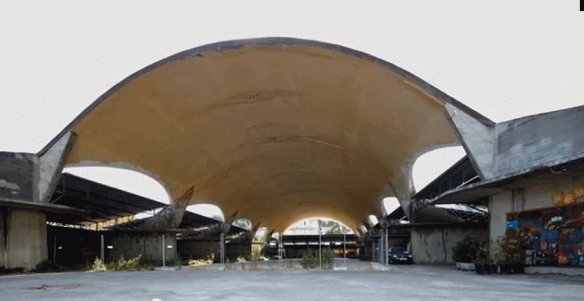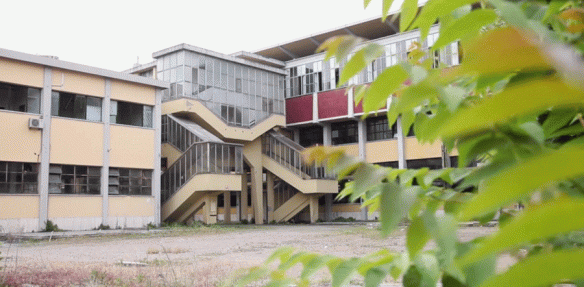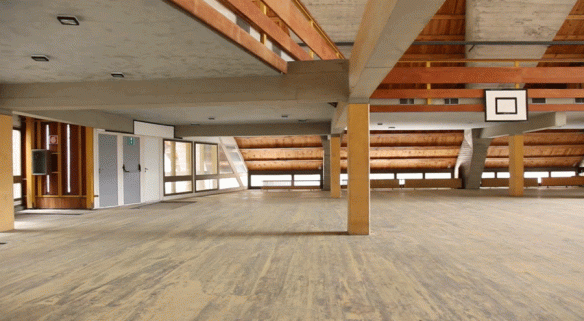It may be surprising to find oneself feeling nostalgia for modernist architecture, since modernist architects themselves were anything but nostalgic. Yet there is a strangely compelling element to the discovery of the buildings mournfully filmed in Luka Skansi’s The Remnants of a Miracle (I resti di un miracolo).
These are the abandoned masterpieces of Italian architecture from the 1950s and 1960s, the period of the ‘miracolo economico’. The ‘products of ambitious political, industrial and economic investments’ that resulted from the cutting edge of architectural and engineering research of that time. These are the sort of buildings that might have graced the covers of architecture periodicals fifty years ago, that told us we could live in the ‘now’.
Today, these buildings are abandoned, neglected, forgotten. Though not, as that description might suggest, are they all in ruins. Some show the signs of long-term abandonment, but others look like they could have been deserted only weeks earlier. Desks and chairs in place, light fittings intact, no windows smashed, no graffiti. They almost look like they are ready to move into.
It is true, as Skansi points out, that these buildings are no longer occupied because the industries that flourished in Italy at that time no longer flourish. But that tells us only part of the story. The other part: we have found no way to reuse them, we have not been able to protect them, nor can we bring ourselves to just knock them down. Skansi argues that modern architecture was never flexible enough, that its destiny is similar to the architecture of any historical period, sooner or later its time comes to an end. ‘Architecture has a very short life.’ Yet there we are, exploring Skansi’s I resti di un miracolo in the Arsenale, an industrial building that dates from the twelfth century! The ‘time of the Arsenale’ has not come to an end. It is an unconvincing argument, especially in Italy.
I think the fate of these buildings reflects a particular characteristic of modernity rather than one of architecture per se. Technology plays a critical role in the architecture of modernity, in the very conception of modernity. Part of the dream of the modern movement was for a new building material, something like stucco perhaps, but more elastic, a material that would maintain the machine-made industrial aesthetic and the purity of the surfaces, a material that would not age (Blake). It is the technology we refer to when we describe the architecture of modernity as ‘cutting edge’, it is the technology that makes it contemporary. Technology is sometimes all that contemporary buildings can boast, and It is not surprising that many of the remnant buildings in I resti di un miracolo were the work of engineers, rather than architects.
It is ‘the spirit of modernity’ in modernist buildings that prevents us from imagining a future for them, that prevents from imagining them as buildings to be rediscovered and re-deployed. Modernist buildings were never destined to grow old. But we know that buildings have histories, we know that they grow and change, that their use is determined by our imagination. When we restore historic buildings, we are faced with this question: what does restoration mean? Taking the building back to when it was completely new? But why should we privilege that manifestation of the building over all the others it has lived though? There is no really satisfying answer to that question.
Students in contemporary architecture schools are often given sets of problem solving exercises on a grand societal scale. Here is mine for them: reclaim the abandoned modernist buildings, recycle them into something that is new and vibrant, something that speaks to this age as well as to the ‘historic age’ of modernism. Perhaps this is already happening somewhere in Italy. I hope so.
Blake, Peter, Form Follows Fiasco, Atlantic-Little, Brown, Boston & Toronto, 1977.



